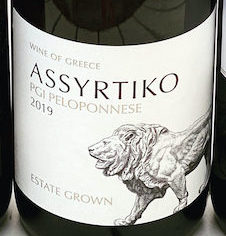
Assyrtiko and Xinomavro: make this dynamic duo your Greek odyssey
Given its singular role in the genesis of wine, not to mention its place in the creation of what we now call ‘social drinking’ – for ancient Athenians, a worthy-sounding ‘symposium’ – it should come as little surprise that modern Greece makes some of the world’s most distinctive – and exciting – wines.
With exports booming, new wineries have emerged all over the country since the financial crisis of a decade ago, which saw bigger rivals struggle, with the average producer owning just half a hectare. Such individuality has born fruit – literally – and though international varieties still play their part, there is now a far greater focus on the indigenous grapes that do so much to distinguish the wines of Greece.
From well over 200 indigenous varieties, consumers outside the country are probably familiar with just a handful, with white Assyrtiko and red Xinomavro at the vinous vanguard.
Assyrtiko, star of Santorini
Offering a sea shanty of salinity, Assyrtiko has journeyed from its birthplace on the beautiful island of Santorini, in the southern Cyclades, to grace some of the world’s finest wine lists, with prices to match its status as an icon of wine fashion.
Rich in minerality and relatively high in alcohol, Assyrtiko is celebrated for its ability to retain its crisp acidity and zesty citrus character in the searing summer heat, and also its potential for ageing. Now grown all over Greece, it is seen as a potential saviour elsewhere as temperatures rise with global warming, but its quintessence is still to be found in Santorini, where the volcanic soils mean the ancient vines are free of phylloxera.
“Santorini is unquestionably the home of the greatest Assyrtiko,” says Freddy Bulmer, until recently the Greek buyer for the Wine Society, “you can get it on the mainland, but I have personally struggled to find anything to rival the salty, taut wines that provide a taste of Santorini’s sea air, rather than just the variety.”
For a truly top notch example, from the island of Santorini, try the spellbinding Estate Argyros Assyrtiko (£34.50 at Fortnum and Mason), but you can also sample the grape if you’re on a budget, thanks to a discount supermarket chain. Assyrtiko PGI Peloponnese (£9.99 at Aldi) comes from the mainland and lacks the unique saline edge of the more expensive wine, but it’s still very good, so a great opportunity to discover this distinctive variety, a perfect partner for grilled white fish.
 Best
Bestbuy
Xinomavro, Barolo meets Burgundy
Noble, idiosyncratic Xinomavro – whose name literally translates as ‘sour black’ – hails from the north of Greece. Somewhere equidistant between Burgundy and Barolo in style, Xinomavro combines high acidity and muscular tannic power with a beguiling and dainty, rose-petalled charm.
“Xinomavro has such potential to make awesome wines,” says Bulmer, “it can reflect where it is grown, which is vital for any successful variety, and it can really get detail into the glass. It has backbone, but it can also be very elegant and fine-tuned.”
For a great example, try Xinomavro Jeunes Vignes, Thymiopoulos 2019 (£10.95 at The Wine Society) which offers a perfumed, seductively light combination of rose petals, pot pourri and delicate red cherry fruit. It can also take a light chill and, as you’d expect, it is wonderful with a beef stifado!
This is an edited version of a piece which originally appeared in Club Oenologique.